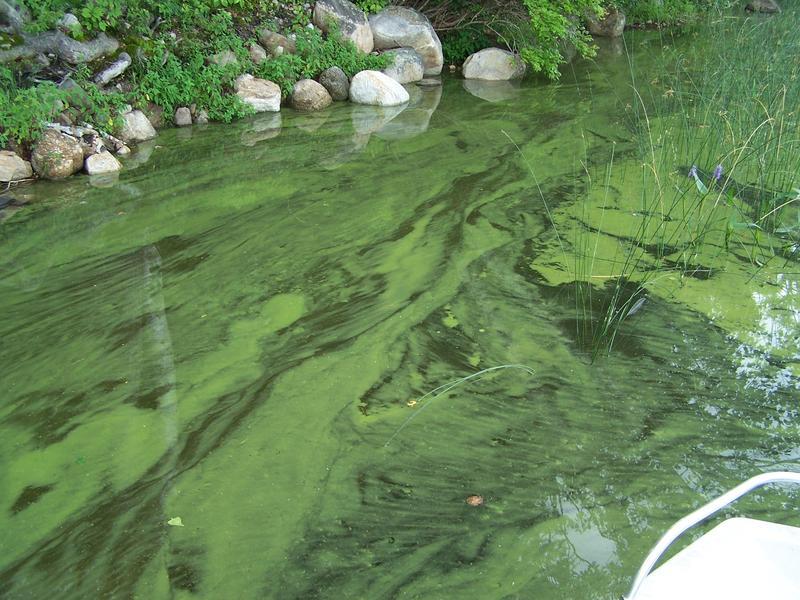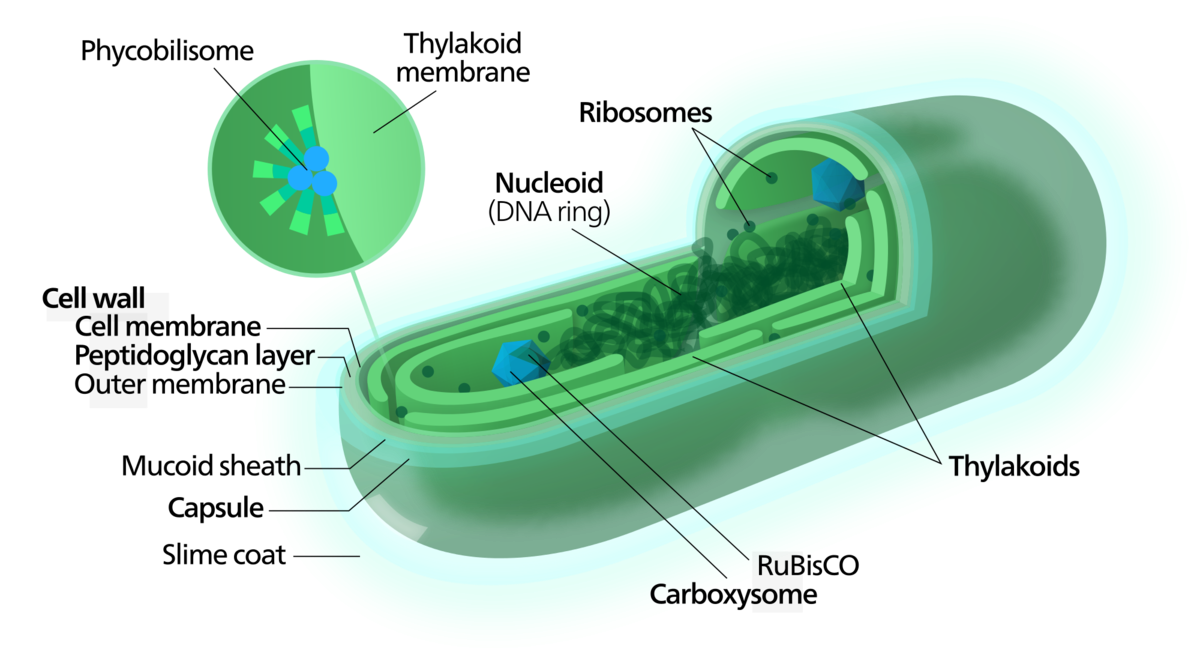Something Wild
- Tags:
- Clean Water,
- Something Wild

A cyano-bacteria bloom on a NH Lake. Photo courtesy NH DES
To everything there is a season and this is the season when we go swimming and we spend a lot of time talking about Cyanobacteria. So what is it, exactly? Sonya Carlson is head of the Beach Inspection Program with the state Department of Environmental Services and gave us a primer on the micro-organism.

Cyanobacteria has been on earth for a long time, to the tune of 3.5 billion years! “In fact, we scientists think it's what created oxygen in our atmosphere, so it's a very important part of this world.” Carlson stressed that the bacteria itself is not necessarily the problem. It’s ubiquitous, she says it “has been found in every lake and water body around the world, but usually it's just a small part of the ecosystem.” Instead it’s the toxin that the Cyanobacteria emits over its life span, or all at once when it dies, that is the problem. Those toxins “can actually hurt people and dogs and livestock.”
Cyanobacteria blooms are tricky to predict but there elements that are common to all of them. “When the conditions are right - calm water, warm water, lots of sunlight - the Cyanobacteria will grow and grow.” Colonies of these photosynthesizing microbes can take on many different forms. Carlson explains they can be, “icky blue-green; it can look like paint chips; it can be cloudy pea soup in the water.”
But even a bloom doesn’t necessarily have toxin levels to be harmful. Though as Calrson explains it’s easy to determine when Cyanobacteria is in the water, “we'll come out and scoop up some of that scum [in the water] and take it back to look at it under the microscope.” It’s a fairly quick test and with the help of the microscope, she counts the Cyanobacteria in the sample. Testing for the toxin is a more complicated and time consuming process, requiring third party lab tests. “The problem is we don't know when the bloom, which looks gross, necessarily has a toxin component or not.” So DES bases their beach advisories largely on the density of Cyanobacteria rather than on the presence of the toxin.
Among the 950 lakes over 10-acres and the many smaller fresh water bodies in the state, they are all equally endowed with Cyanobacteria. DES regularly tests about 160 of those beaches (three times each per summer), and you can take a look at their beach advisory here.
So once you identify a bloom surely there’s a pill for that, right? No, not really. Some products make claims at “curing” Cyanobacteria problems. Carlson explains, “a lot of times those are chemicals that kill the Cyanobacteria. And if you kill the Cyanobacteria all at once, all the toxins are let out” all at once. This can make the water more dangerous. She suggests the best way to deal with blooms is to let nature take its course.
